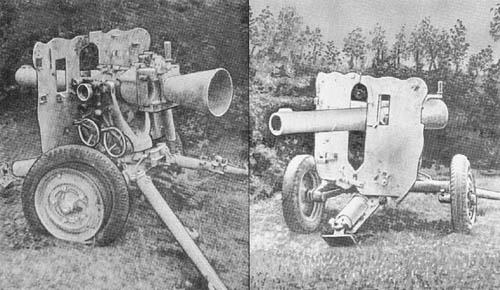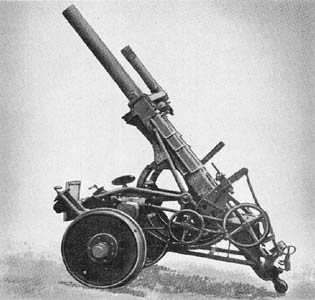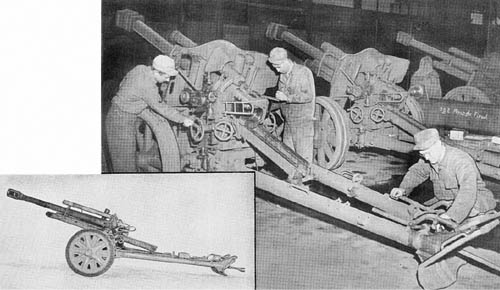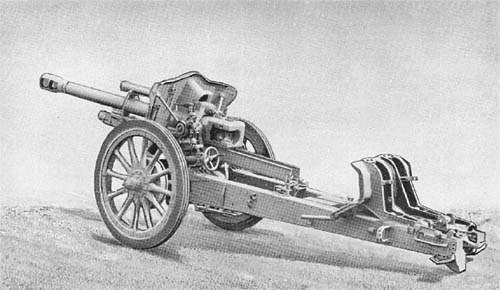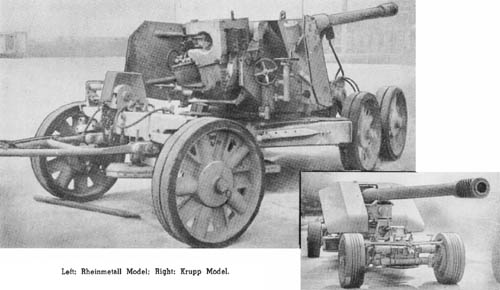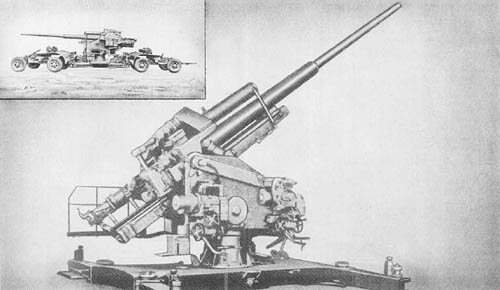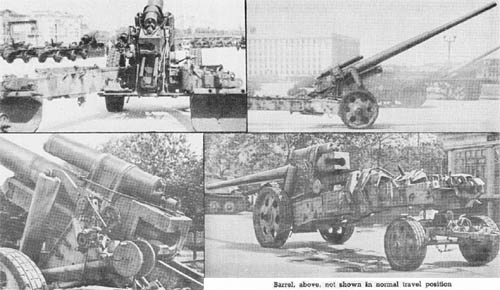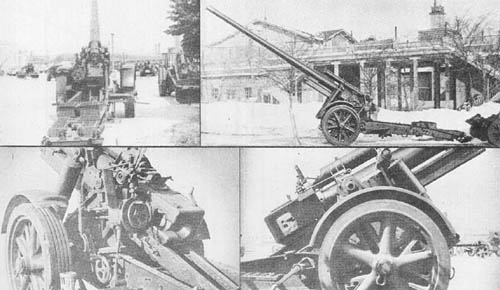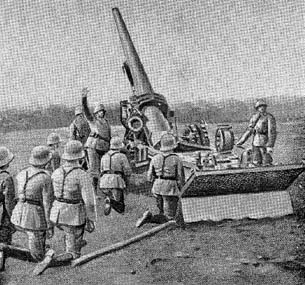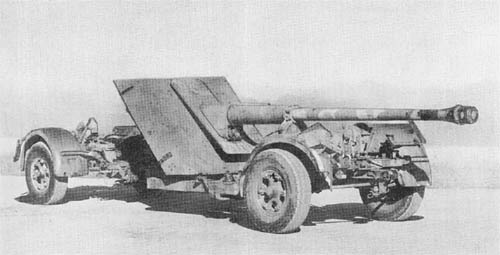
The 8.8 cm Pak 43 is an electrically fired, semiautomatic gun, mounted on a cruciform platform (Kreuzlafette) and transported on two single axle limbers similar to those used on the 8.8 cm Flak 18. It has a very low silhouette, on wheels the height to the top of the shield is 5 feet, 6 inches, and to the trunnions, 4 feet. When emplaced it is 12 inches lower.
The gun can be fired from its wheels without extending the side legs, if the direction of fire does not exceed 30° either side of the longitudinal girders. If the direction of fire is greater than 30°, the side legs must be extended and the pads brought firmly in contact with the ground. There is an automatic electric cut-out to the firing gear which restricts elevation to 12° on early equipments and 16° on later equipments when firing over the mounting legs.
There are several other versions of the Pak 43. The Pak 43/41 (page 113) has a two-wheeled carriage with split trails. The Pak 43/1 (page 34) is a self-propelled gun called the “Rhinoceros.” Its chassis is a combination of a Pz. Kw. III and Pz. Kw. IV. The Pak 43/2 (page 39) is a self-propelled gun called the “Elephant”; it is also mounted on the chassis of the Panther (Pz. Kw. V). All of these guns use the same ammunition and have the same ballistic characteristics.
SPECIFICATIONS
| Caliber | 88 mm (3.46 ins.) | |
| Weight (traveling position) | 13,000 lb. | |
| Weight (firing position) | 7,900 lb. | |
| Length (traveling position) | ||
| Length (firing position) | ||
| Height (traveling position) | 5 ft., 6 ins. | |
| Height (firing position) | 4 ft., 6 ins. | |
| Width (overall) | ||
| Length of barrel (w/o muzzle brake) | 247.5 ins. | |
| Length of bore | 236.9 ins. | |
| No. of grooves | 32 | |
| Width of grooves | .202 in. | |
| Depth of grooves | .048 in. | |
| Width of lands | .134 in. | |
| Muzzle Velocity (A.P.C.B.C. shell) | 3,280 f/s | |
| (H.E. shell) | 2,460 f/s | |
| Max. range (horizontal) | 17,500 yds. (H.E. shell)* | |
| Max. range (vertical) | ||
| Rate of fire | ||
| Traverse | 360° | |
| Elevation | 40° | |
| Depression | -8° | |
| Length of recoil (normal) | 47.5 ins. | |
| Ammunition | A.P.C.B.C.; H. E. | |
| Wt. of projectile | (H.E.) 20.68 lbs.* | |
| (A.P.C.B.C.) 22 lbs. |
*Unconfirmed
**AP 40 round (tungsten carbide core)
Pzgr. Patr. 40/43 . . . . . . . . . 16 lb.
Gr. Patr. 39 HL/A and B . . . . . 16.8 lb.
German: p. 112.1
